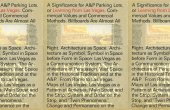The Brilliant Objects Embodying the Meeting of Disability and Design
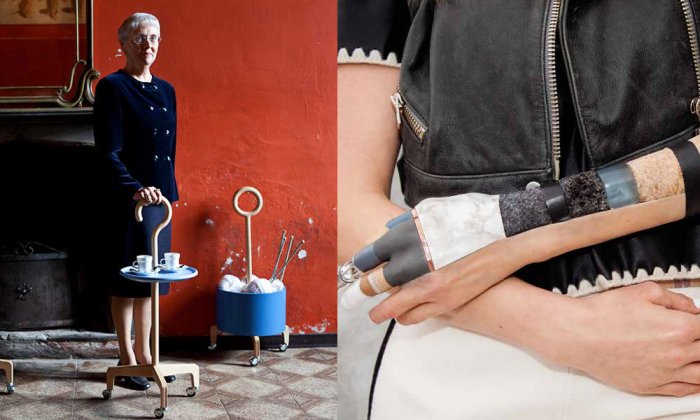
Charles Eames believed that “design depends largely on constraints.” During WWII, he and Ray Eames were called upon by the U.S. Navy to design a leg splint for injured and disabled service personnel. The particular constraints of this brief led the Eameses to develop their own technology for forming plywood in complex curvature, in order to make a lightweight yet stiff structure that accommodated the form and variation of the human body.
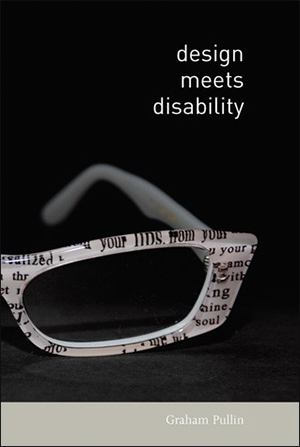
But this technique had a far-reaching influence on the future work of the design partnership and design in general. Organic plywood forms underpinned the iconic mainstream furniture manufactured by Herman Miller in the 1940s and 1950s, and through which the Eameses first became well-known. This sequence of events challenges the so-called trickle-down effect whereby advances in mainstream design are expected to eventually find their way into specialist products for people with disabilities, smaller markets that could not have supported the cost of their development. Flow in the opposite direction is just as interesting: when the issues around disability catalyze new design thinking and influence a broader design culture in return.
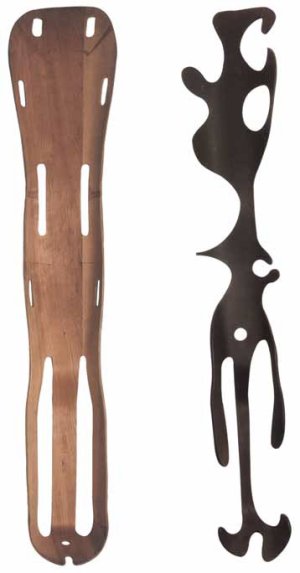
This is one of the principles at the heart of my 2009 book “Design Meets Disability.” Back then, this was largely a speculation of what might be possible if disability design involved more designers trained in art schools and art universities. Since then, several projects have embodied this meeting of disability and design and, had they existed at the time, would have been used as exemplars.
For the preface of the book’s Japanese edition, published this year by O’Reilly Japan and included in part below, I had the opportunity to highlight a few of these projects, theme by theme, chapter by chapter.
ALLELES, founded in Canada by McCauley Wanner and Ryan Palibroda, designs and manufactures covers for prosthetic limbs. Since 2013, ALLELES has shipped thousands of covers around the world. These are conceived of as “fashion-forward,” in other words from the perspective of wearing rather than more narrowly using, a theme explored in the first chapter of the book, fashion meets discretion. It’s in this chapter that I examine a traditional goal of medical design to compensate for disability as discretely as possible. But might flesh-colored prostheses and miniaturized hearing aids send out tacit signals that impairment is something to hide?
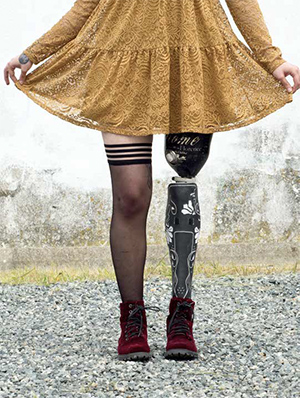
The Alternative Limb Project, founded by Sophie de Oliveira Barata in 2011, approaches prostheses as wearable sculptures. Sophie was originally trained as a maker of hyper-realistic prosthetics and often juxtaposes this approach with fantastic or abstract elements. The process of co-creating each limb with its wearer exemplifies the open-minded exploration of the second chapter, exploring meets solving. As I write in the book, not all design is about solving problems. Designers may revisit an object, a material, or a medium that has already been successfully designed, designed with, or designed within many times before, in which case the value does not lie in solving an unsolved problem. Designers responding to or reacting against each other’s experiments advances design as a discipline and a culture. Designers learn as much by being inspired as from being informed.
Might flesh-colored prostheses and miniaturized hearing aids send out tacit signals that impairment is something to hide?
The OMHU cane designed by Rie Nørregaard in 2010 takes details familiar from other products and clothing: the shaft of a bicycle tube, the rubber from a hiking boot, the birch wood used for skateboards. In this way, it fits into the lives of those who may never have used a cane before — and those that they share their lives with. Omhu means “with great care” in Danish, and although not itself digital, there is an analogy with the value of thoughtful restraint in the third chapter, simple meets universal.
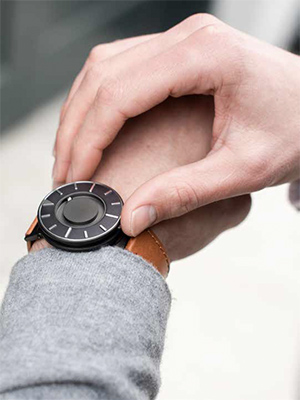
The Eone Bradley timepiece, crowdfunded in 2013, is a tactile watch with ball bearings that move in place of hands. It was “designed for touch when you can’t easily use sight: during a meeting, in a movie theater, or due to a vision impairment,” which mirrors the role of The Discretion Watch that Crispin Jones and I designed. (The Discretion Watch can be read without even touching it with the other hand. When the wearer rotates their forearm at the wrist, they will feel vibrations in certain orientations. This allows the wearer to feel the time in response to languid and, with practice, indecipherable body movements.) This resonance between certain disabled people and non-disabled people in particular circumstances is defined in the fourth chapter, identity meets ability.
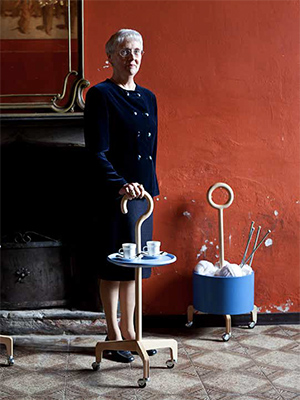
Hospitable by Paul Chamberlain and Lab4Living in Sheffield, UK, is a 2017 collection that embodies the ways in which healthcare is likely to shift from the institution of the hospital to our homes. The role of the Infusion Lamp and Grande Commode is not to propose solutions but to provoke reflection, a theme of the fifth chapter, provocative meets sensitive. Elsewhere on a spectrum from critical to more optimistically speculative lies Italy- and Singapore-based consultancy Lanzavecchia + Wai’s 2012 No Country for Old Men, a collection of objects for older people.
Alterpodium is a collaboration instigated by curator Amanda Cachia, who identifies as a dwarf activist. In 2015 she commissioned artist and researcher Sara Hendren to design a folding podium. This took the form of an experience prototype, both unashamedly unfinished yet actually used, as in the sixth chapter, feeling meets testing. More than just a platform, deploying the podium involves “performing disability.”
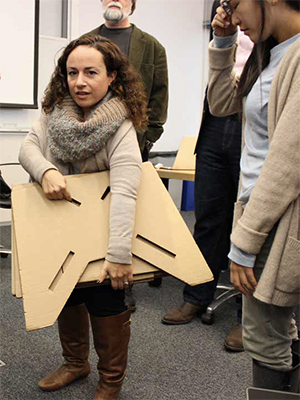
This also amplifies the social negotiation of “a little cough” identified in Tomoko Azumi meets step stools in the eighth chapter, meetings with designers. Azumi is a furniture designer whose work often involves what she terms the enjoyment of transformation. When thinking about step stools, she considers the situation in which a person with restricted growth is in a public environment — for instance, in a bar. If they wish to order a round of drinks at the bar, a step stool can help put them at a height where they can catch the bartender’s eye. But if the room is crowded, setting up the step stool requires creating a bit of space to do this in. The act of unfolding the steps can itself play a role in this negotiation. It becomes a little announcement to those around, even a performance — a perspective that echoes Azumi’s interest and previous involvement with theater.
In 2010, a critical design approach was brought to augmentative and alternative communication. The Six Speaking Chairs were designed with Andrew Cook to catalyze discussion about the tone of voice (or rather the lack of any nuance in tone of voice) in communication devices. And from 2015, Darryl Sellwood‘s “provocative, disruptive and subversive” Bummunicator, which raises the issue of disabled people’s needs in developing romantic and sexual relationships, would also have enriched the seventh chapter, expression meets information.
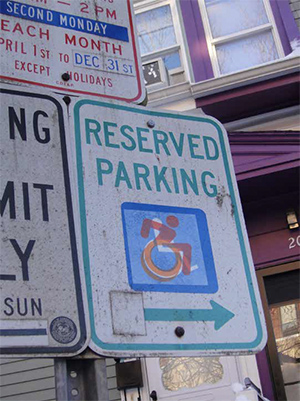
The Accessible Icon Project was another collaboration of Sara Hendren’s, with Brian Glenney. In 2011 it involved defacing existing disability signage by overlaying an alternative representation that challenged a certain passiveness of the International Symbol of Access (designed by Danish design student Susanne Koefoed in 1968). The implied dialogue — and much of that subversion — has been lost now that it has been widely adopted as a standard itself. All of which is relevant to the speculation if Stefan Sagmeister met disability signage in the eighth chapter, meetings with designers. Sagmeister is a graphic designer whose iconoclasm opens up new ways of thinking. His most provocative work, featured in the appropriately named book “Made You Look,” includes a poster for the AIGA infamously cut into his own skin. Sometimes appropriately shocking and sometimes deliberately understated, his work frequently steps back from a predictable response. He resists the urge to represent social or political campaigns with trite logos or “cheesy ideas like drawings of people holding hands.” Disability demands and deserves more diverse and more sophisticated approaches.
Making
Since 2009 there has also been the start of a revolution in manufacturing technology and its accessibility. Which is very welcome: Assistive technology has been typically constructed from welded metal and vacuum-formed plastic, befitting the medical engineering workshops of hospitals. More affordable CNC mills, laser cutters, and 3D printers now enable complexity and accuracy in even — and especially — small batch and made-to-measure production.
But this might compound a tendency for disability design to be seen as an activity for hobbyists in home workshops. Although that workshop might contain a 3D printer, this is no guarantee of the quality in design that disabled people deserve. Working with disabled people themselves and often alongside those with technical skills, I would still argue that designers and architects have a valuable contribution to make.
The democratization of the maker movement can at times embrace a refreshing pragmatism. And design activism can empower individuals and communities. Yet the ethos of any project can be further expressed through design sensibilities, if these are included. And you can usually tell if they have been.
Technology
To a tech-savvy audience, the section of the book that may feel most out of date is the reflection on platforms vs. appliances in the third chapter, simple meets universal. Since 2009 the platforms have largely won out, haven’t they? More of us use the features on our phones than carry separate cameras or music players and so on. Although apps themselves could be considered virtual appliances — the best certainly embody restraint and constraint — and the internet of things is upon us.
But there are undercurrents, too: concerns about our “wellbeing” being instrumented through digital platforms, and more broadly our entire lives being quantified, monitored, recorded and shared; the politics of privacy in an age of surveillance capitalism. Areas in which disabled people can find that they have inadvertently become pioneers — including those who use text-to-speech technology that saves a record of anything “spoken” in a lifetime, leading to legal proceedings to contend who has access to this personal data.
We shall see how the economics and politics and ethics play out. But in the meantime, please bear with the specific technologies written about and project the arguments of simplicity and universality onto current and breaking technologies.
Disability Studies
In 10 years, disability itself could be said to have changed. An artist that we work with tells us that he now identifies as “disabled,” where a decade ago he would have not: and he feels it important to do so. There is more awareness of “ableism.”
I probably cannot completely disentangle changes to the politics of disability from my own growing appreciation of this. Our work is these days so much more informed by disability studies — Rosemarie Garland-Thomson, Sue Schweick, Neil Marcus, Liz Jackson, Harilyn Rousso, Georgina Kleege, Heather Love, Amanda Cachia, Tobin Siebers, Robert Adams, Sara Hendren, Aimi Hamraie, Chris Smit, Bess Williamson, Rob Imrie, and many others, all of whom I have had the good fortune to meet and to learn from. Sara Hendren’s 2020 book “What can a body do?” has further deepened connections between disability studies and design.
Since 2009, new landscapes of disability design have also opened up. In prosthetics, the traditional “cosmetic” approach to anatomical realism (which is not real) has been joined by robotic hands that do not conceal but deliberately display their technology: Their wearers may refer to them as their “Terminator hand.” This is welcome in that it has acknowledged a number of different attitudes that disabled people have towards their own disability. And this choice is good.
And yet this is a very polarized choice. It still leaves many disabled people in the middle — neither wanting to “pass” as non-disabled or to be misunderstood as trying to do so (these are complex social and cultural interactions), nor wishing to feel somewhat co-opted into a brave transhuman future that we are all supposedly marching into. A future that technologists are in many ways already invested in.
When “Design Meets Disability” was first published it was rare to find disability and design connected at all. Today there are more examples, yet not often enough steered by disabled people as the experts in their own lived experiences. Many disabled people resist narratives of tragedy or triumph over adversity, preferring to see disability as part of the fabric of everyday life. If objects are to reflect and embody this stance, they will demand and deserve a more sophisticated approach to design and disability.
Graham Pullin is Professor of Design and Disability at DJCAD, the art college at the University of Dundee in Scotland, where he teaches interaction design and co-founded Studio Ordinary, a meeting of disability studies and design research. He previously worked as a senior designer at IDEO and at the Bath Institute of Medical Engineering. He is the author of “Design Meets Disability.” Read more about Pullin’s work here.


